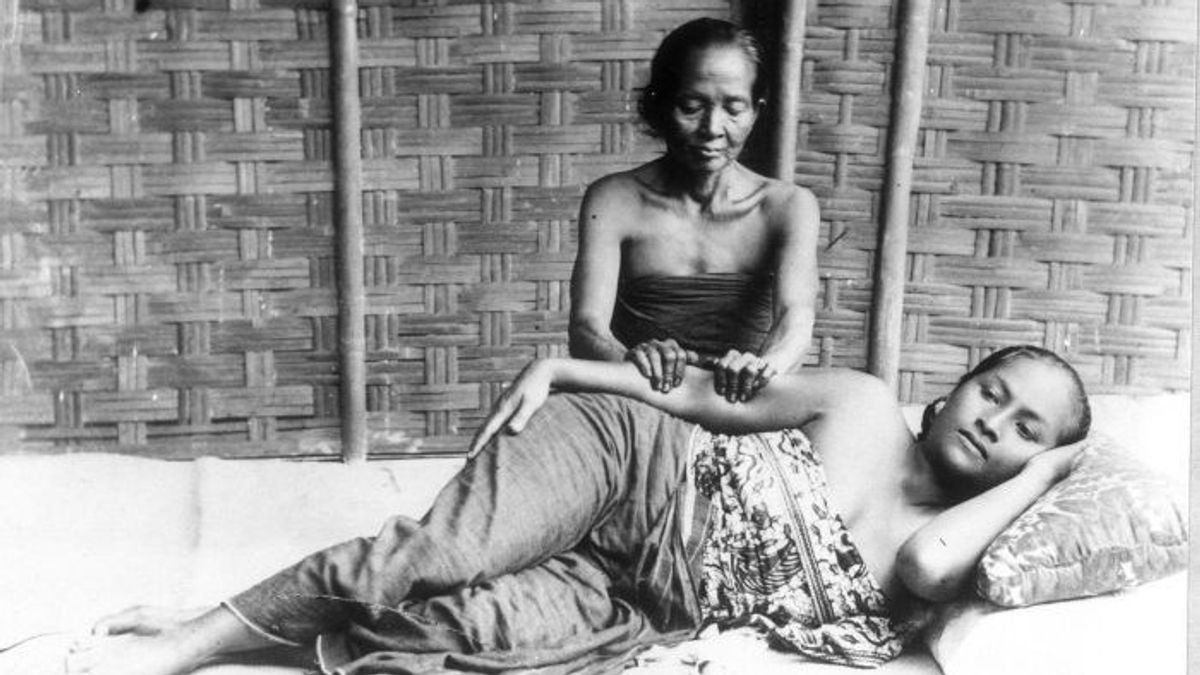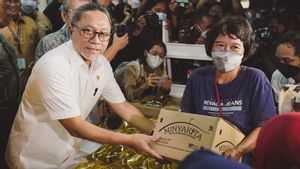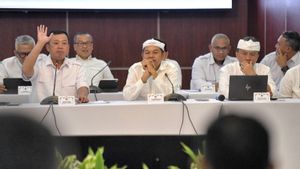JAKARTA - Since ancient times, traditional birth attendants have been instrumental in giving birth to Bumiputra women. They are considered saviors. Its existence is also famous in the archipelago. But the Europeans saw otherwise. Instead of being considered useful, their presence actually brings harm. They are thought to contribute to increasing infant mortality. To the extent that Governor General Herman Willem Daendels, initiated a training program to "enlighten him".
Long before the presence of midwives, traditional birth attendants were important people who helped give birth to Bumiputra women. This belief has been passed down from generation to generation, even though this scene was still common during the Dutch colonial period. Because they are considered sacred, and set a low fee so that they can be paid with the produce of the earth, traditional birth attendants are very popular with Bumiputra women.
One of his portraits can be seen in Banda Aceh. This profession is mostly done by women. Usually, the woman has given birth and has certain supernatural powers, especially those who have a "connection" with ancestral spirits known as Nek or Nek Rabi.
It is said that Nek Rabi is the spirit of a woman who used to live in Banda Aceh. One night when he came home from recitation, someone cut off his head because he was suspected of stealing. The killer took his head to a place called Indrapuri and buried it there, while his body was buried in Banda Aceh. Because Nek Rabi is known as a good person, his spirit often helps traditional birth attendants during childbirth.

“Because Nek Rabi died before the appointed time, he wandered around and always asked something of a woman who was giving birth. But Nek Rabi only appears if something unnatural is done in the ceremonies before birth, especially during the seventh month feast. On that occasion he 'entered' the spirit of the dukun beranak, who then spoke in the spirit voice of Nek Rabi and the shaman was no longer able to continue his assistance in the delivery,” said anthropologist TO Ihromi in Principals of Cultural Anthropology (1999).
Not only for the people of Aceh, the great influence of traditional birth attendants has also emerged from the Bugis community, Sulawesi since the past. Cultural expert, Feby Triadi, said that the dukun (sanro) with children or sanro makkiana is only limited to those who have a lineage. Therefore, the role of Sandro Makkiana became famous among the Bugis people.
Not to mention the greatness that spreads by word of mouth that can legitimize the abilities of Sanro Makkiana. Among other things they have powers such as spells or certain objects. Thanks to that, people believe that a sanro makkina is able to bring certain powers. Mainly, to help Bugis women who are about to give birth.
"Including that in the past, after Islam was strengthened, there were special behaviors that the sanro did, including praying before and after helping people who gave birth. Or just giving certain readings in the water which will later be given to people who are about to give birth, thanks to that (they are believed to be) able to launch the pregnant woman to give birth,” said Feby Triadi when contacted by VOI, June 24.

It is possible that traditional birth attendants have become so famous in giving birth to Bumiputra women. However, the Dutch colonial government and European doctors had a bad opinion of traditional birth attendants. The reason is that most traditional birth attendants do not have adequate knowledge regarding the natural process of giving birth to a normal baby. Moreover, traditional birth attendants are described as not fully aware of deviant conditions when assisting childbirth. As a result, traditional birth attendants perpetuate high maternal and infant mortality rates.
As a solution, the colonial government under Governor-General Herman Willem Daendels (1808-1811) provided training for traditional birth attendants. However, the effort was frivolous. Some traditional birth attendants are motivated to learn. Meanwhile, others return to ancestral knowledge that has been passed down from generation to generation. The condition is like what happened in Minahasa, Sulawesi. Which, the infant mortality rate did not decrease.
"Although since 1854 the traditional birth attendant called Biang in Minahasa has been given health education courses by the Governor, in 1885 the infant mortality rate and maternal mortality rate were very high," wrote Jessy Wenas in Minahasa History and Culture (2007).
The colonial government did not give up. On the recommendation of the Head of Health of the Dutch colonial government, Dr. W. Bosh, the first midwifery school was founded in Batavia in 1852. However, the school had the same fate as training for traditional birth attendants, which ended in failure. The reason is none other than the prestige of dukun beranak beyond those who work as midwives. At the same time, the infant mortality rate is still rising, even though midwives and traditional birth attendants work together to help the community deliver.
“When compared to the death rate from smallpox, the maternal mortality rate is actually much higher. Unfortunately. the Dutch government paid little attention to the high death rate. It was only in 1889 by Straats (an obstetrician from Austria) that midwifery was given voluntarily,” concluded Sudarwan Danim et al in the book Midwifery (2003).
*Read other information about HISTORY or read other interesting articles from Detha Arya Tifada.
Other MEMORIESThe English, Chinese, Japanese, Arabic, and French versions are automatically generated by the AI. So there may still be inaccuracies in translating, please always see Indonesian as our main language. (system supported by DigitalSiber.id)










